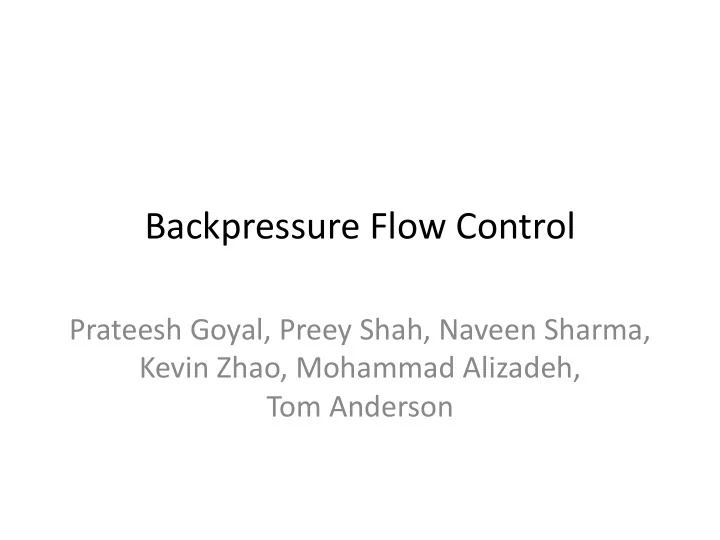

Backpressure Flow Control Prateesh Goyal, Preey Shah, Naveen Sharma, Kevin Zhao, Mohammad Alizadeh, Tom Anderson
Two Types of Congestion Control • End to End: action delayed by at least one RT – Sources send initial window – Adjust rate based on feedback – Complex control loop: topology and signalling • Hop by Hop: short control loops – Sources send at line rate, pushback at switch – Per-flow state and head-of-line blocking – Widely used at server and rack level
Why Now? • Data center bandwidth increasing rapidly – Soon, most traffic will fit in a single round trip • Latency and tail latency a dominant concern – Increasing percentage of RDMA • Traffic patterns are highly bursty – Hard to control what isn’t stable • Network operational costs important – E2E: lower utilization for same tail latency
Switch Capacity Increasing
Buffering Matters to Tail Latency DCQCN, 99% tail latency, Google workload, 75% util+incast
Elephants Are Mice Weighted by flow size 100 Gb 1 Tb
Backpressure Flow Control • Assumptions (Tofino like) – Limited number of egress queues (e.g., 32) – Queues can be paused/unpaused – Deficit RR among unpaused queues • Dynamic assignment of flows to queues • Per-hop pause frames, bloom filter for flows – Aggressive: push queueing upstream unless needed to keep egress busy • Switch state ⍺ number of queued flows
Buffer Occupancy BFC buffers ⍺ number of queued flows
Tail Latency 99%, Google workload, 60% util + incast
Cross-Data Center Traffic 99% tail latency, intra-DC traffic in presence of cross-DC traffic
Network Cut Theorem For today’s bursty traffic patterns and flow sizes, e2e cc cannot provide all of (choose at most 2): • C: High link capacity • U: Efficient link utilization • T: Low tail latency Hop by hop flow control can provide all three
Backup
Faster Links Harder to Control DCQCN, Google workload, 75% util+incast
Recommend
More recommend